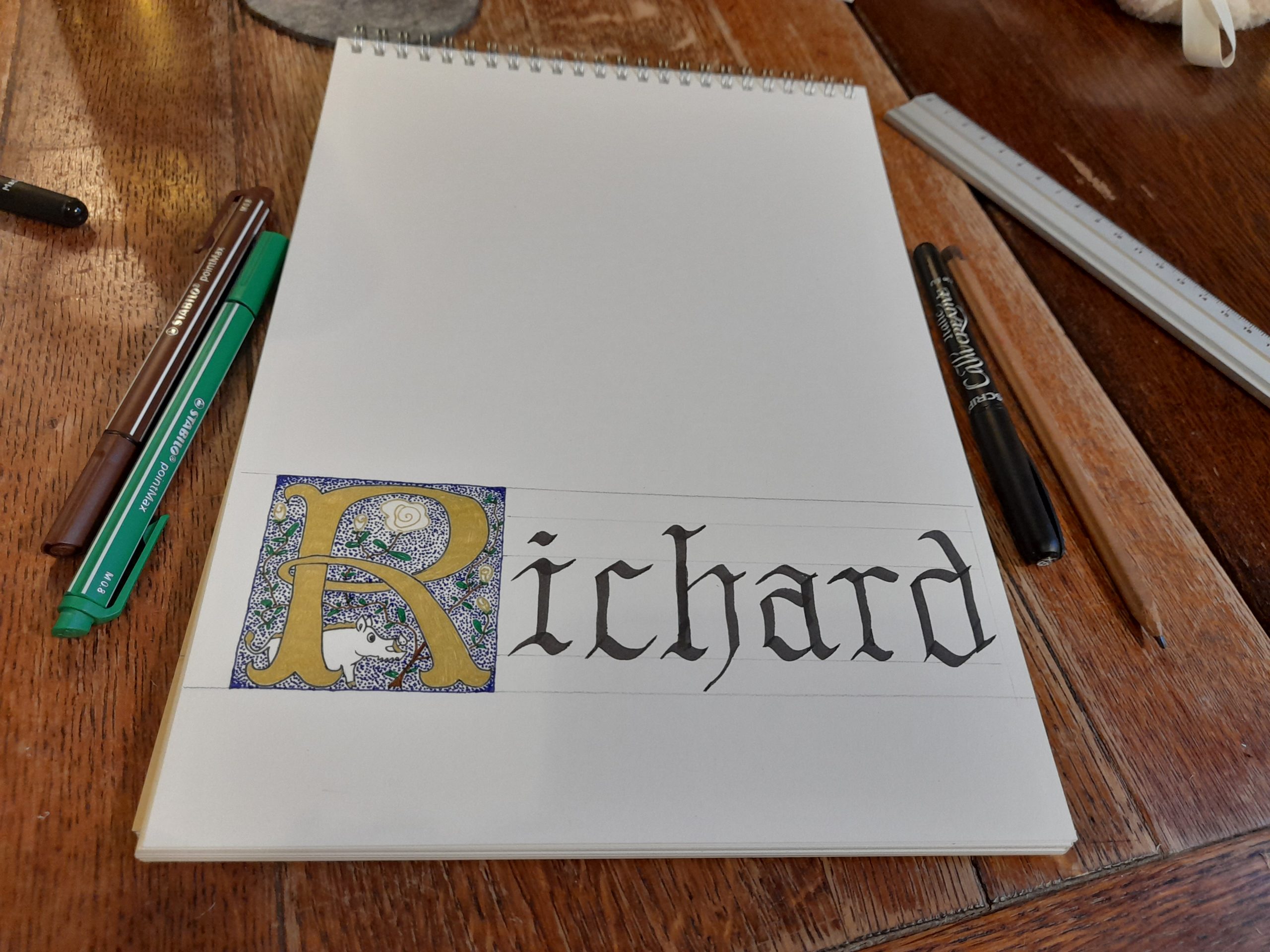It’s National Handwriting Day on 23rd January! Established by the Writing Instrument Manufacturers Association in 1977, the day celebrates the use of pens, pencils and writing paper.
We asked Georgina Holmes, one of our volunteers, to research the importance of handwriting in medieval life:
Before the invention of the printing press in 1440, words were transferred to paper by scribes, a much more time-consuming process than printing or typing. It will come as no surprise that the written word itself was not common knowledge in the medieval period. Writing and reading was exclusive, and only the wealthiest (who could afford an extensive education) learnt such skills.
Monks and individuals living in monasteries were the most likely scribes. Handwriting such extensive manuscripts was a laborious task, as a common medieval saying goes: “The fingers write, but the whole body suffers”. Due to the nature of a medieval quill, only downwards strokes were easily achievable. This nib-design nightmare meant individual letters had to be written in multiple strokes. Whereas today one can easily churn out pages of handwritten paper in a day, medieval calligraphy was a slow process – it could take up to a year to complete a Bible!
In spite of the labours of writing, the calligraphy it produced is beautiful and manuscripts were valuable possessions. Much like today, people of the past had different handwriting styles – a particular hold of the quill, the fluidity of ink used, pressure applied to the page and direction of strokes (ductus), added individuality and flair to texts.
The generic style adopted was known as ‘uncial lettering’, a form inspired by Roman literature and Latin and used throughout the Middle Ages. Images and illuminated lettering were a key part of medieval calligraphy and the colour and construction of these letters made manuscripts a work of art.
The end of this manuscript era (1375-1525) came with the widespread adoption of the printing press. Prior to this, scribes worked in silent rooms, outlining pages before carefully copying from original texts and illuminators would then add the decorative illustrations. The Gutenberg press and other such devices allowed for mechanical copying of manuscripts, this launched a revolution in literature and made texts far more accessible. Unsurprisingly given its importance at the time, The Bible was the first book to have been produced by such methods.
Beautifully illustrated and extremely popular, a Book of Hours was a private book of devotions. Hours were not like mass produced books of today, rather they were individualised and artistic copies of original manuscripts. In fact, the popularity of these books prior to the printing press meant that they were often handwritten by teams of scribes – emulating a large-scale production mechanism.
King Richard III’s ‘Book of Hours’ is longer than many other hours and was originally owned by an unknown individual around 1420. Books of Hours were originally incredibly costly, and often only the wealthy could afford the finely produced handwritten copies.
Richard III’s ‘Book of Hours’ has been digitised and a pdf is available on the Leicester Cathedral website. It has a comprehensive commentary at the end about the book itself, including its purpose, production and interpretation! It is a great primary source on Richard III’s life and much is yet to be uncovered from it.
